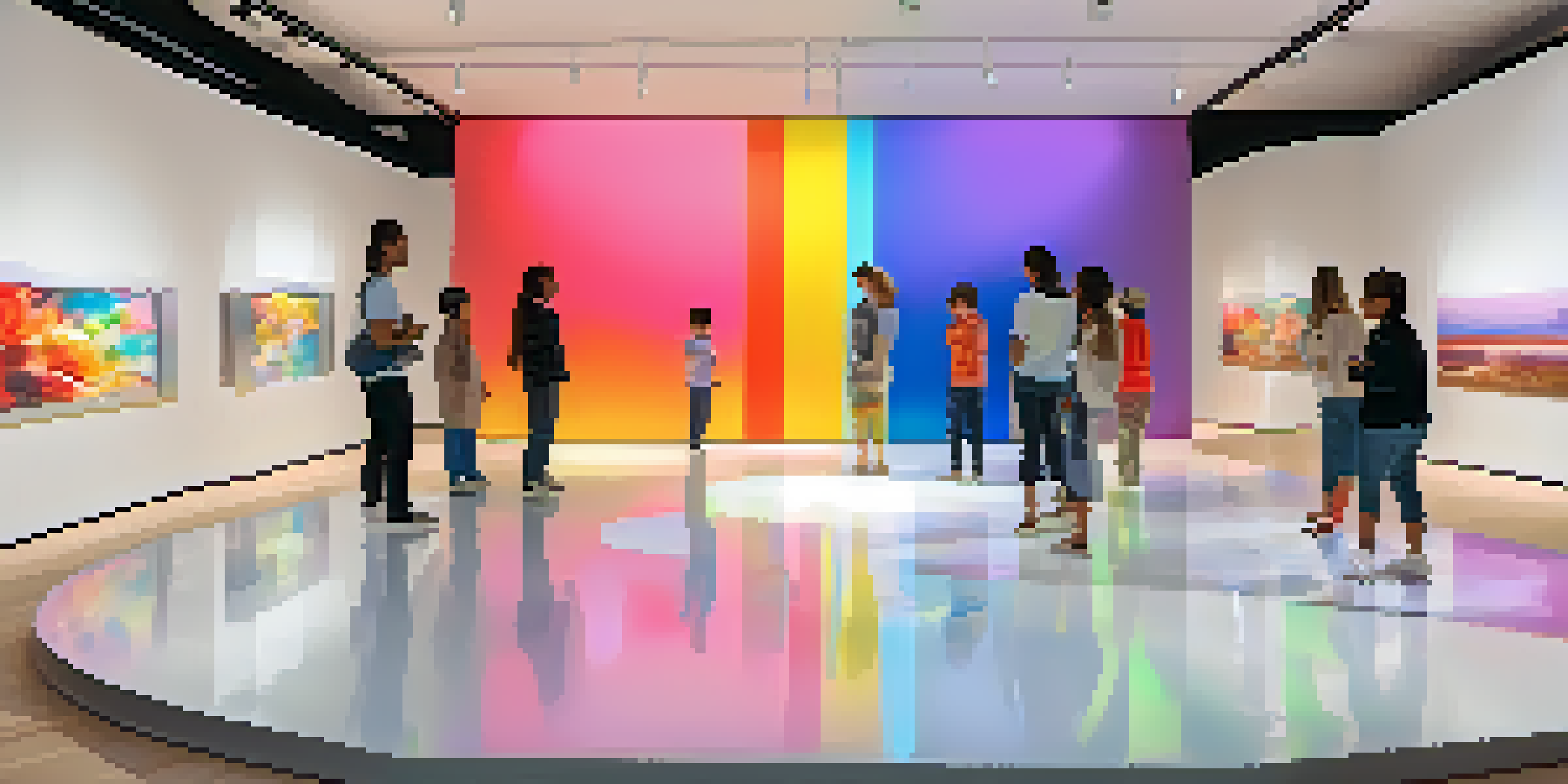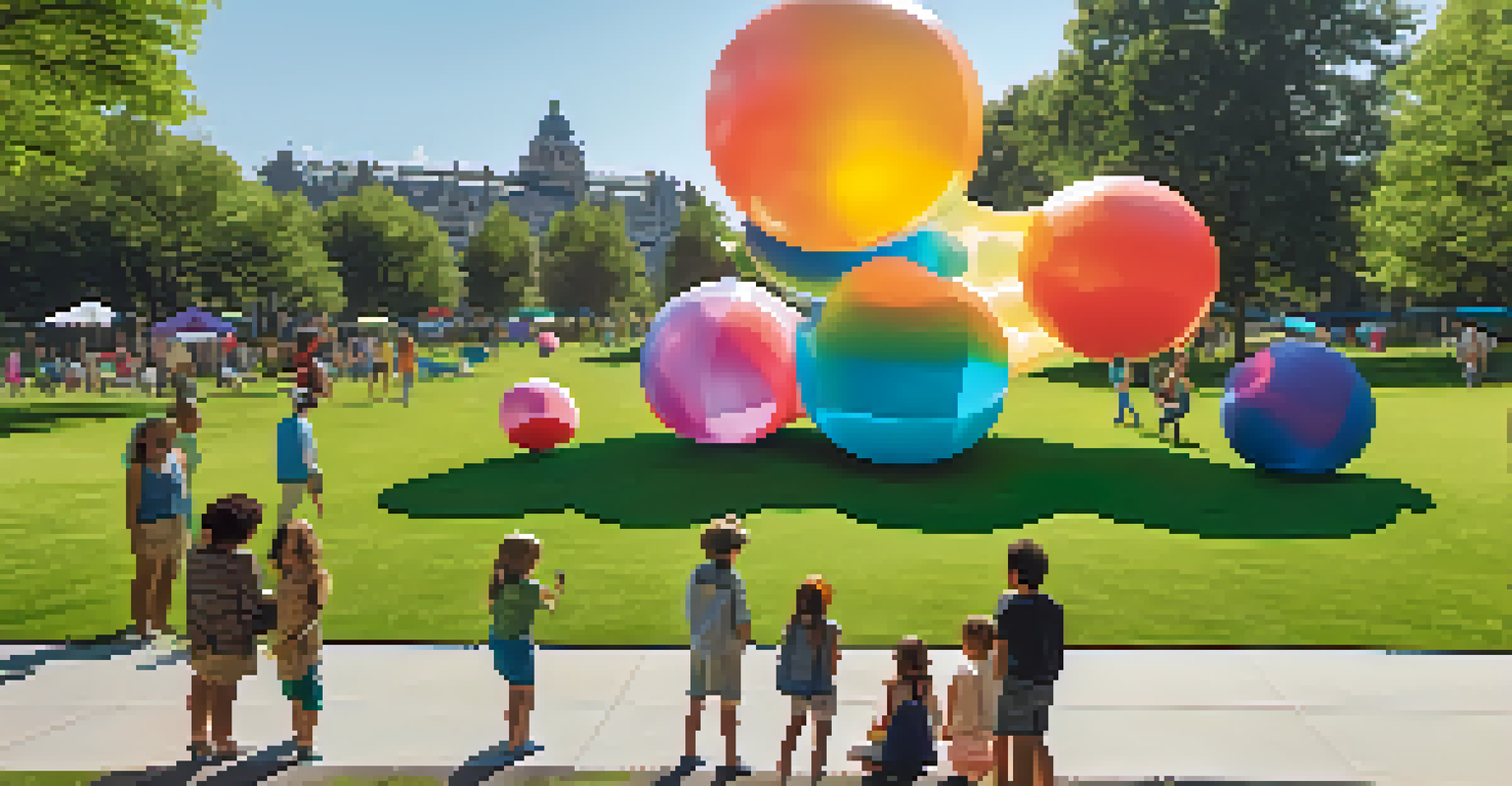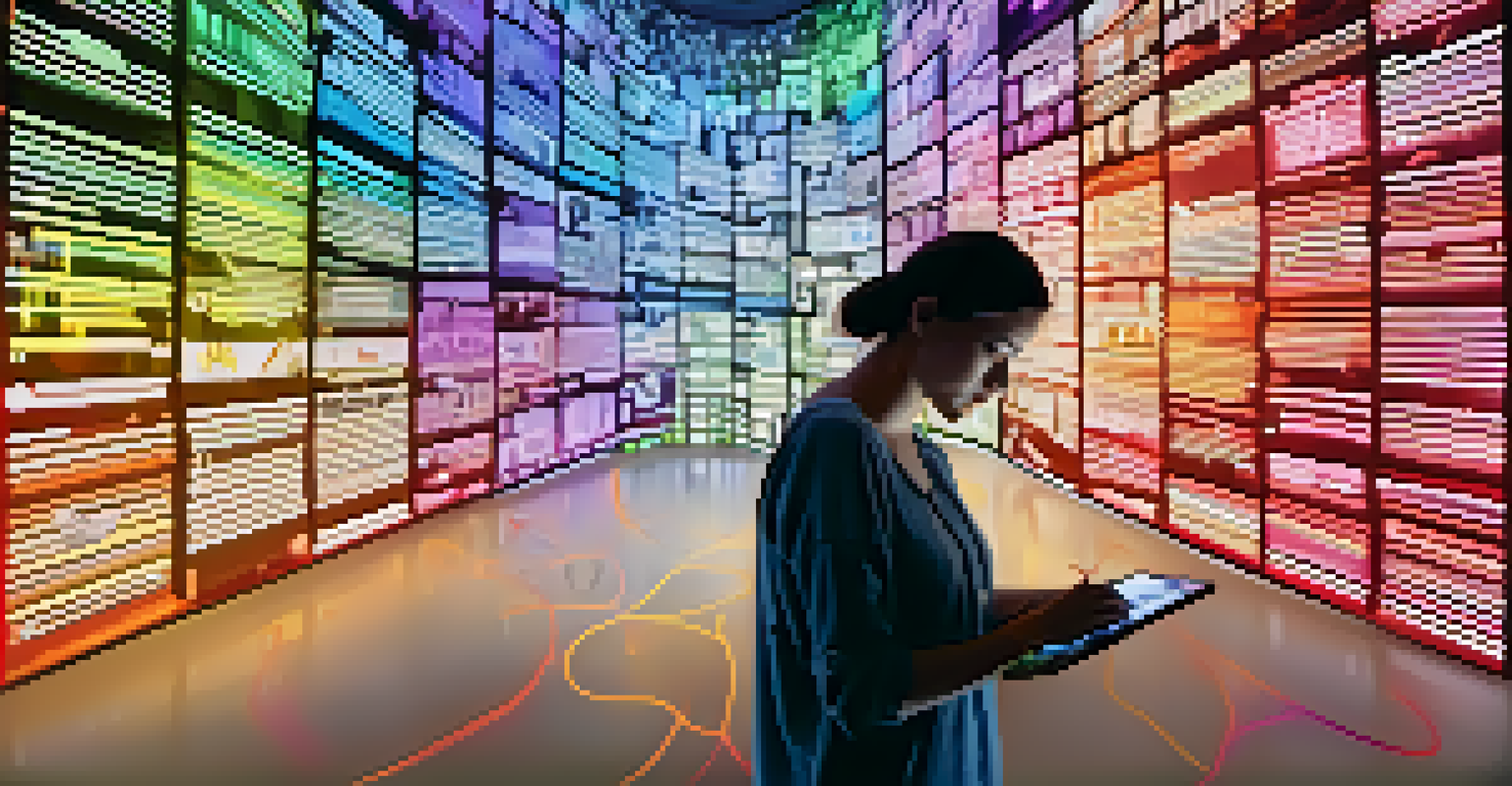Interactive Art Installations: Engaging Audiences in New Ways

What Are Interactive Art Installations?
Interactive art installations are creative spaces where viewers become participants. Unlike traditional art, which is often passive, these installations invite audiences to engage, touch, and even alter the artwork. This shift transforms the viewer's role from observer to co-creator, fostering a deeper connection with the piece.
Art is not a mirror held up to reality, but a hammer with which to shape it.
For instance, think of a digital mural that changes colors based on how many people are in front of it. This interaction creates a unique experience each time someone engages with the art. It’s this dynamic that makes interactive installations so appealing and relevant in today’s art scene.
Moreover, these installations often utilize technology—think virtual reality or augmented reality—to enhance engagement. This blend of art and tech creates a multi-sensory experience that captivates and excites audiences of all ages.
The Evolution of Interactive Art
Interactive art has its roots in the 1960s, stemming from movements like Fluxus and Conceptual Art. Artists began to prioritize the audience's role, pushing boundaries of creativity and engagement. Over the decades, this approach has evolved significantly, especially with the advent of digital technology.

One notable example is the rise of installations that incorporate social media, allowing participants to share their experiences instantly. This not only broadens the artwork's reach but also invites real-time contributions from a global audience, making art more accessible than ever.
Interactive Art Transforms Engagement
Interactive art installations invite viewers to become participants, fostering deeper connections with the artwork.
As technology continues to advance, so too does the potential for interactive art. New mediums and methods are constantly emerging, allowing artists to dream bigger and create even more immersive environments that resonate with viewers on multiple levels.
Benefits of Engaging the Audience
Engaging audiences through interactive art installations offers numerous benefits. Primarily, it fosters a sense of community and connection among participants. When people share an experience, it often leads to discussions, friendships, and a deeper appreciation for the art itself.
The artist is not a special kind of person; rather, each person is a special kind of artist.
Additionally, interactive installations can educate audiences in a fun, engaging way. For instance, an interactive exhibit about climate change may allow visitors to visualize the impact of rising sea levels through direct interaction, leaving a lasting impression.
Moreover, these installations can challenge viewers' perceptions and encourage critical thinking. By becoming part of the artwork, participants are prompted to reflect on their role in society and the environment, ultimately sparking meaningful conversations.
Technology's Role in Interactive Art
Technology plays a pivotal role in the creation and experience of interactive art installations. From projection mapping to sensors that respond to movement, artists are leveraging innovative tools to engage audiences in ways that were previously unimaginable. This technological integration opens the door to endless creative possibilities.
For example, an artist might use motion sensors to trigger sound or light changes based on audience movement, creating a symphony of interaction. Such experiences not only enhance the sensory aspects but also make the art feel alive, inviting participants to explore and experiment.
Technology Enhances Artistic Experience
Innovative technology like motion sensors and projection mapping plays a crucial role in creating immersive experiences.
As we move forward, the marriage of art and technology will likely become even more pronounced. With advancements in artificial intelligence and machine learning, we may soon see installations that adapt and evolve based on audience interactions, making each visit a unique journey.
Creating Memorable Experiences
One of the most significant aspects of interactive art installations is their ability to create memorable experiences. Unlike traditional art, where the interaction is limited to observation, these installations encourage participation, making the experience more personal and impactful. Visitors often leave with strong emotional connections to the art.
Think of a large-scale installation where participants can write messages on a digital wall, which then transforms into a visual narrative. This not only allows for personal expression but also creates a collective story that resonates with everyone involved.
These shared experiences often lead to increased social media engagement, as people are eager to document and share their unique interactions. This not only promotes the art itself but also fosters a sense of belonging among participants, further enhancing the overall experience.
Challenges in Interactive Art Installations
Despite their allure, interactive art installations come with their set of challenges. One primary concern is the need for constant maintenance and updates, especially when technology is involved. Technical glitches can detract from the experience and may frustrate participants.
Additionally, artists must balance the elements of interactivity without overwhelming the audience. If an installation becomes too complex or requires extensive instruction, it might deter participation, defeating its purpose. Simplicity and clarity are crucial to fostering engagement.
Future Focus on Collaboration and Customization
The future of interactive art will likely see more collaboration between artists and technologists, leading to personalized and dynamic installations.
Moreover, accessibility is another significant challenge. Artists must consider how to make installations inclusive for all audiences, including those with disabilities. Thoughtful design and consideration can help ensure that everyone can enjoy and participate in the experience.
The Future of Interactive Art Installations
Looking ahead, the future of interactive art installations seems bright and full of potential. As artists continue to explore new technologies and engagement strategies, we can expect even more innovative and immersive experiences. The trend toward personalization and customization will likely become more pronounced, allowing visitors to tailor their interactions.
Furthermore, we may see a rise in collaborative projects between artists and technologists, leading to groundbreaking installations that push the boundaries of creativity. These partnerships can spark fresh ideas and inspire new forms of artistic expression, making art more dynamic and relevant.

Ultimately, the evolution of interactive art installations reflects a broader cultural shift toward valuing participation and community engagement. As we embrace these changes, interactive art will continue to captivate and inspire audiences, making it an exciting space to watch in the coming years.